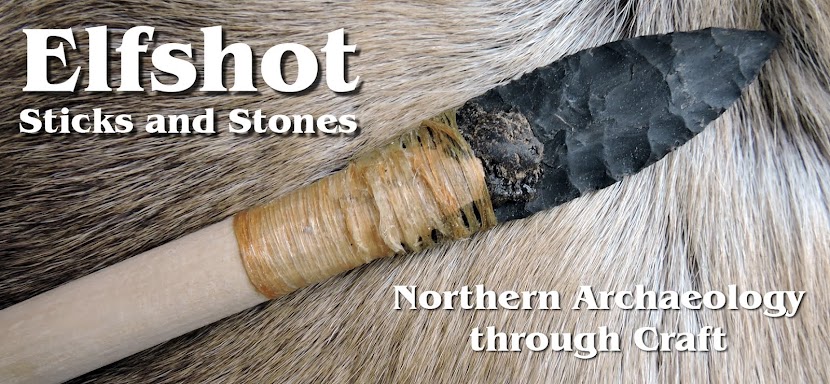 |
A traveling exhibit for Canada's
northermost National Park |
Here's a look at the (very nearly) completed Kettle Lake Discovery Kit that was put together by Parks Canada to help tell the early archaeological story of Quttinirpaaq National Park on northern Ellesmere Island, Nunavut. I've been involved in making
artifact reproductions and
sharing stories from Quttinirpaaq since 2010. Most recently, I was asked to make a couple reproductions of
Independence I stone tools complete with organic handles for inclusion in this tri-lingual (Inuktitut, French, and English) traveling kit. A lot of people were involved in the planning, design, and assembly of the contents of this pelican case, but the person coordinating it all was Parks Canada's Patrick Carroll. Earlier this week Patrick shared photos from
Quatro Design of the end result and secured permission for me to share these images on my blog. I think it all looks fantastic and it shouldn't have any problems being tossed in and out of twin otters and helicopters on it's way to and from Quttinirpaaq.
 |
| I haven't seen the case in person, but it looks like there are flat cards that fit in the lid of the box with maps, photos, and information from the Kettle Lake archaeological sites. In the foam body of the case there is a list of the artifact reproductions included in the kit, a series of individually bagged lithic reproductions, the case containing the hafted artifact reproductions and a copy of Ancient Stone Tools of Nunavut by Douglas Stenton and Robert Park. |
 |
| Each of the small bags in the kit contains an artifact reproduction that users can handle and a card with a photograph of the original artifact that the reproduction is based on on side. |
 |
| The flip side of the photo card has the English, French, and Inuktitut name for the stone tool |
 |
| The centre box contained a hafted scraper and microblade based on the tools found by Parks Canada archaeologists at Kettle Lake. There is a sticker label that will go on top of this box when the kit next makes it's way to the Parks Canada office in Iqaluit. |
 |
| The whole kit fits into a rugged, waterproof pelican case about the size of a brief case. If you happen to see this case on the ground in Quttinirpaaq - I'd love to see a photo! |
Photo Credits: Quatro Design inc. courtesy of Parks Canada




























